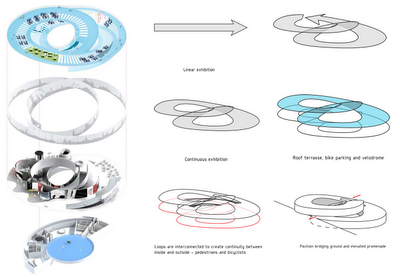"Be wary of any prophetic end of days argument" I keep telling myself. Still, I end up attempting to discredit such hypothesis, as if I'm scared of the the possibility of those prophecies being right.
PIIQ range of Sony headphones
I was strolling back and forth through the web on the course of reading my emails when I found out that Sony has just released a new range of arty headphones called
PIIQ "aimed at the youth market". Sony states that "[the] headphones draw from the collective experience of artists, skaters, street culture and all-around limit-pushers to create high-concept headphones with sound ready for the ride."
Basically, these are "headphones for skaters and kids who want to be skaters". "They claim they are full of “skater fashion” and “high-concept urban awareness,” which means Sony’s designers in Tokyo watched some MIA and Lady Gaga videos." (these words were in a website which has removed them (mmmm) and are now only available thanks to the time defying "google search"
cache feature. Also, I have no idea what
PIIQ stands for, or even if it stands for anything at all. Still, its website has won a
Favourite Website Award.
Roller Radio - Moving Sound
The first image that came to my mind when I saw the models [I enjoy creating my self-conditioned mental correlations] was the one of my long gone (and missed) radio cassette recorder, a yellow Philips
Roller Radio designed in 1981. My yellow Roller Radio was part of the Moving Sound range of products (
1,
2,
3,
4,
5...), an extension of
the original one designed in 1981 by
Graham Hinde.
Robert Blaich who was once head of Philips design explains this mini boombox's "fit" design
history in detail. Long story short: "The design was one of the first to come out of the
Philips Youth Task Force, a group set up to address Philips' declining market share in younger age groups" who then preferred Japanese products.
"One outcome of this quest [for form at consumer electronic corporations around the world] was the unexpectedly successful Philips Roller Radio, which stood out from the boxy, tech looking, metal finished appliances common amongst consumer electronic brands in those days. This radio was explicitly designed to appeal to the youth market. The loudspeakers were clearly separated from the main body holding the radio tuner and cassette player. The handle expressed portability. The back revealed bulges underneath which the batteries fitted. The bright colors and shiny plastic finish created a distinct youthful contemporary look and feel. As the story goes, the initial proposal was refused several times by top management, who couldn’t believe that such a radically different approach could sell beyond the required quantities to break even. The development team managed to secure initial orders in opposition to the opinions of management and production began. Against all odds, sales soon exceeded the wildest expectations."

Sports series Walkmans and My First Sony range of products
He continues by telling how Philips wasn't able to pick up from "the initial momentum they had created" giving it away to its competitor Sony which quickly created the range
My First Sony (1988) and the
Sony Sport series (1983). Philips Moving Sound range was created as a response to these advances by Sony.
Black squares
These were times when an "appliance platform […] retained almost the same configuration of internal components for a few years, whilst the outside was restyled on a regular basis like a dress following the fashion of the day", says Grünsteidl.
Now, the era of small black square boxes begs the question: "what role does industrial design retain?" [In
Objectified the same issue is addressed at some point] Is the only way out to turn yourself into the hands of skater-boys and street-artists, to keep retelling the same stories? Because that happened before in 1981 and the result was a radio cassette player with neon colors, two huge speakers that looked like roller skate wheels, and a chunky handle promoting mobility - now that captured it neatly the essence of that decade.





















0 comments:
Note: only a member of this blog may post a comment.